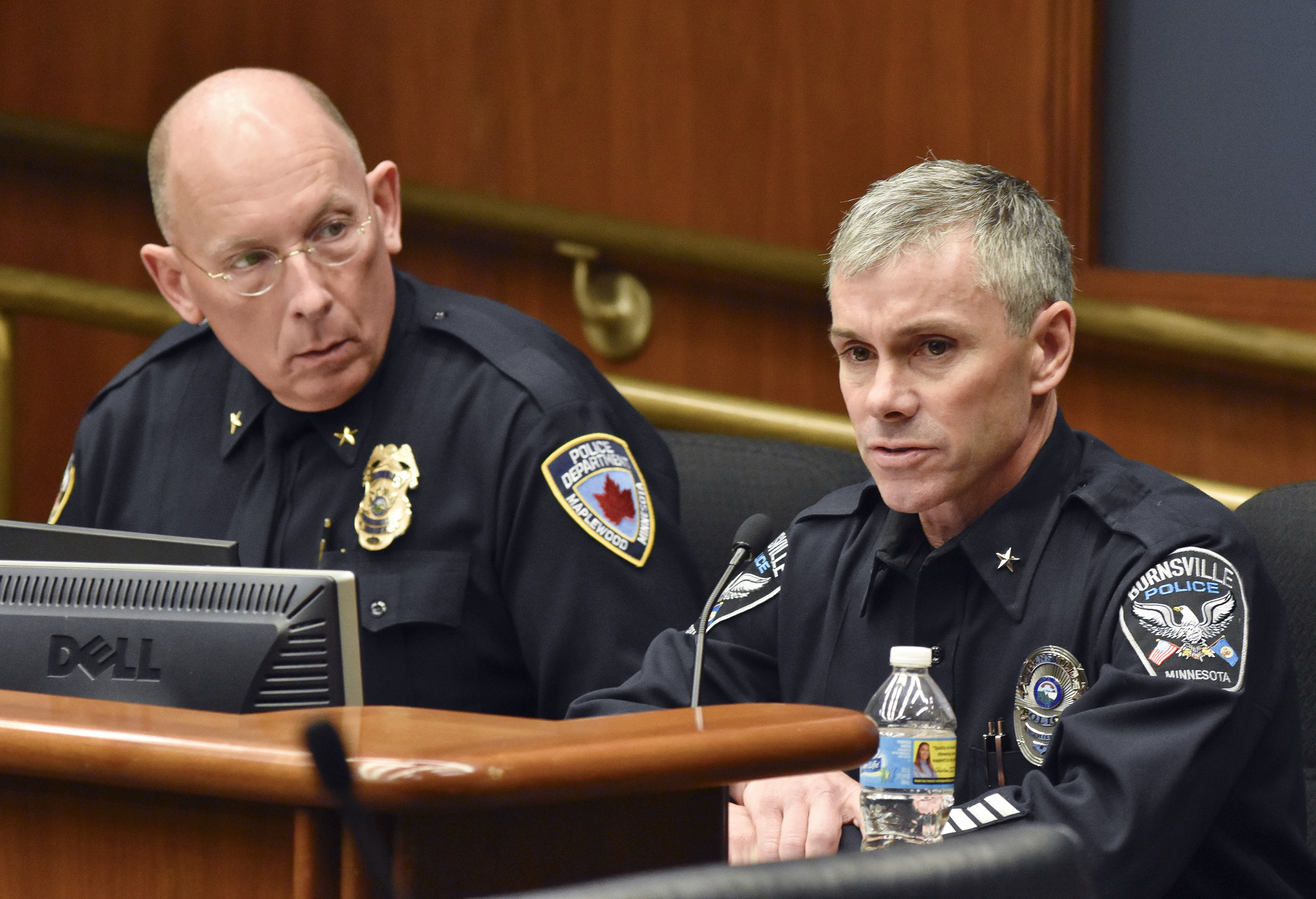Legislative commission debates body camera footage classifications

Under state statute, most government data is classified as public unless specified otherwise.
However, that is creating a conundrum as law enforcement increases its use of body cameras. At issue, for many, is the potential of sensitive information — such as in the case of a domestic dispute — becoming accessible to the public.
“Investigative data collected or created by a law enforcement agency in order to prepare a case against a person, whether known or unknown, for the commission of a crime or other offense for which the agency has primary investigative responsibility are confidential or protected nonpublic while the investigation is active,” per state statute. “Inactive investigative data are public unless the release of the data would jeopardize another ongoing investigation or would reveal the identity of individuals protected.”
But does transparency come at the expense of individual rights?
“This is definitely a challenging issue … when it comes to expectations of privacy,” said Rep. Eric Lucero (R-Dayton).
LISTEN full audio of Tuesday's hearing
The Legislative Commission on Data Practices delved into that issue Tuesday, receiving a background on the use of body cameras and hearing the thoughts of interested parties, including representatives from the Minnesota Coalition on Government Information and the Minnesota chapter of the American Civil Liberties Union. However, no answers to the questions were firmly established.
“There’s broad public interest to ensure we’re doing the job we should,” said Maplewood Police Chief Paul Schnell.
“We want to have successful resolution when we go to court and body cameras help with that,” said Burnsville Police Chief Eric Gieseke, adding he has an extensive list of cases resolved “in a minute or two” once video is seen. His department has used body cameras since 2010.
Lawmakers are deciding if more statutory changes are needed regarding the use of police body camera footage.
For example, what if footage from a traffic stop shows the face of someone sitting in the back seat who is in the state’s Safe at Home address confidentiality program? A fear is their abuser could potentially see the vehicle their victim was in, its license number and where the stop took place thereby potentially providing clues to where the victim now resides.
Rep. Peggy Scott (R-Andover), an advocate for consent, said departments could redact the images of people in a video.
“The fear is we create a policy of what ifs,” said Rep. John Lesch (DFL-St. Paul).
Without safeguards for privacy, the commission heard, people may be less inclined to call law enforcement for help, allow police officers to enter their homes or even engage an officer on the street to ask for directions.
Related Articles
Search Session Daily
Advanced Search OptionsPriority Dailies
Ways and Means Committee OKs proposed $512 million supplemental budget on party-line vote
By Mike Cook Meeting more needs or fiscal irresponsibility is one way to sum up the differences among the two parties on a supplemental spending package a year after a $72 billion state budg...
Meeting more needs or fiscal irresponsibility is one way to sum up the differences among the two parties on a supplemental spending package a year after a $72 billion state budg...
Minnesota’s projected budget surplus balloons to $3.7 billion, but fiscal pressure still looms
By Rob Hubbard Just as Minnesota has experienced a warmer winter than usual, so has the state’s budget outlook warmed over the past few months.
On Thursday, Minnesota Management and Budget...
Just as Minnesota has experienced a warmer winter than usual, so has the state’s budget outlook warmed over the past few months.
On Thursday, Minnesota Management and Budget...